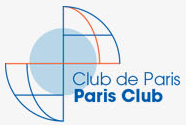Flow and stock treatments
Flow treatments
Flow treatments aim to close the debtor country's financing gap identified by the IMF in the framework of its programs. The gap is the result of external resources - exports, reserves, revenue from foreign assets, remittances, foreign direct investment (FDI), loans and grants - not covering external needs - imports, debt service, repatriation of dividends produced by FDI.
Paris Club agreements usually coincide with the period of time covered by the IMF program, which demonstrates a financing gap that can only be covered by debt rescheduling. This period is called the "consolidation period".
Only maturities owed to Paris Club creditors and falling due during this period are treated. However, in some cases, arrears accumulated as of the start of the “consolidation period” are also treated.
Stock treatments
Some Paris Club treatments apply not only to the payments due over a given period of time, but to the entire stock of debt. The aim of agreements covering the stock of debt is to provide a country with a final Paris Club treatment called an exit treatment. Such agreements are used in two cases:
- Under the HIPC initiative, the action taken by Paris Club creditors in accordance with this initiative takes the form of a stock treatment granted at completion point;
- In other cases, stock treatments may be granted, on a case-by-case basis, for countries that have a satisfactory track record with both the Paris Club and the IMF and where there is sufficient confidence in the debtor country's ability to meet its obligations under the debt agreement.

